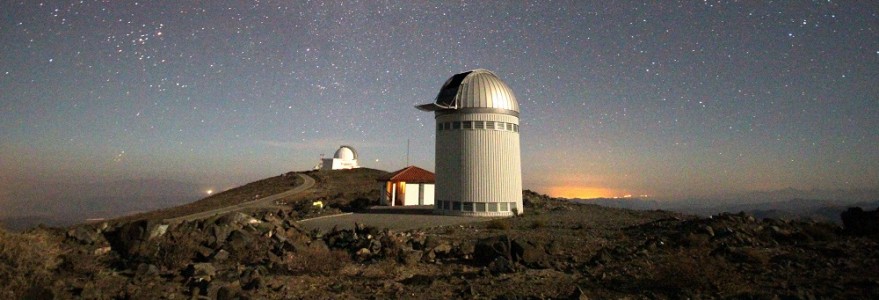One of the largest observing program in the history of the Polish astronomy marks its 25 years. From 24th to 28th July the international conference concerning the OGLE project will be held at the University of Warsaw.
In 1992 the first images of the sky were taken at the Las Campanas Observatory in Chile due to – The Optical Gravitational Lensing Experiment (OGLE). The OGLE sky survey is conducted by the astronomers from the Warsaw University Astronomical Observatory led by prof. Andrzej Udalski.
Currently, the OGLE team includes 12 scientists. More than a billion stars are currently observed by them in the most interesting sky regions, in the center and disk of the Milky Way and in the neighboring galaxies – the Magellanic Clouds.
The OGLE team has published about 450 papers in refereed scientific journals cited about 19 000 times. OGLE data are available to the astronomical community and have been used in a few thousand publications by astronomers all over the world.
A long-term photometric sky survey
The OGLE project is a long-term photometric sky survey dedicated to the research on the sky variability. Since the start of the project it has also been one of the top such sky surveys worldwide. Throughout its 25-year history OGLE has been continuously bringing scientific discoveries of the highest level. The OGLE project sets the new research fields in modern astronomy by pioneering new ways of conducting observations – long-term monitoring of large areas of the sky and developing so called time domain astrophysics.
Achievements of the OGLE
The most important results of the OGLE survey include the first detection of gravitational lensing events and the development of this new field of research in astronomy. The phenomenon of gravitational microlensing was used, among others, to study the dark matter in the Milky Way and the analysis of its structure, as well as to a search for extrasolar planets.
Another breakthrough discoveries have been made in the search for exoplanets. For the first time, the OGLE project successfully implemented two new techniques of exoplanet detection: the method of transits, and gravitational microlensing. So far, 70 extrasolar planets have been discovered.
The OGLE project created the world’s largest collection of variable stars – about one million objects. It contains many unique objects including new, previously unknown types of variable stars. The project regularly discovers eruptive objects – novae, dwarf novae and supernovae.
Many new, interesting objects are found both in our Solar system and on cosmological distances. The former include a number of large objects, candidates for dwarf planets, orbiting in the so-called Kuiper belt, the latter – distant quasars, galaxies and gravitational lenses.
More than a billion stars are currently observed in the most interesting sky regions, in the center and disk of the Milky Way and in the neighboring galaxies – the Magellanic Clouds. The photometry collected by the project already contains more than a trillion individual measurements, obtained in the observing station of the University of Warsaw Observatory located at Las Campanas Observatory in Chile – one of the best astronomical sites in the world. The Polish 1.3-meter photometric telescope at Las Campanas, equipped with the state-of-the-art 32-chip CCD camera, constitute a unique instrument for conducting such a survey.
The scientific results of the OGLE project are published in the most prestigious scientific journals in the world. The OGLE team is the only one in Poland which regularly publishes articles in the top-level journals like Nature or Science. The highest scientific level of the project has been internationally acknowledged by awarding the project PI, prof. Andrzej Udalski, prestigious grant of the European Research Council (ERC) for experienced researchers (AdG) in 2009, and one of the most prestigious scientific awards in the world – Dan David Prize in 2017.
The international conference celebrating 25th anniversary of the OGLE project
From 24th to 28th July the international conference concerning the OGLE project will be held in the Old Library building at the University of Warsaw (Krakowskie Przedmieście Street 26/28).



